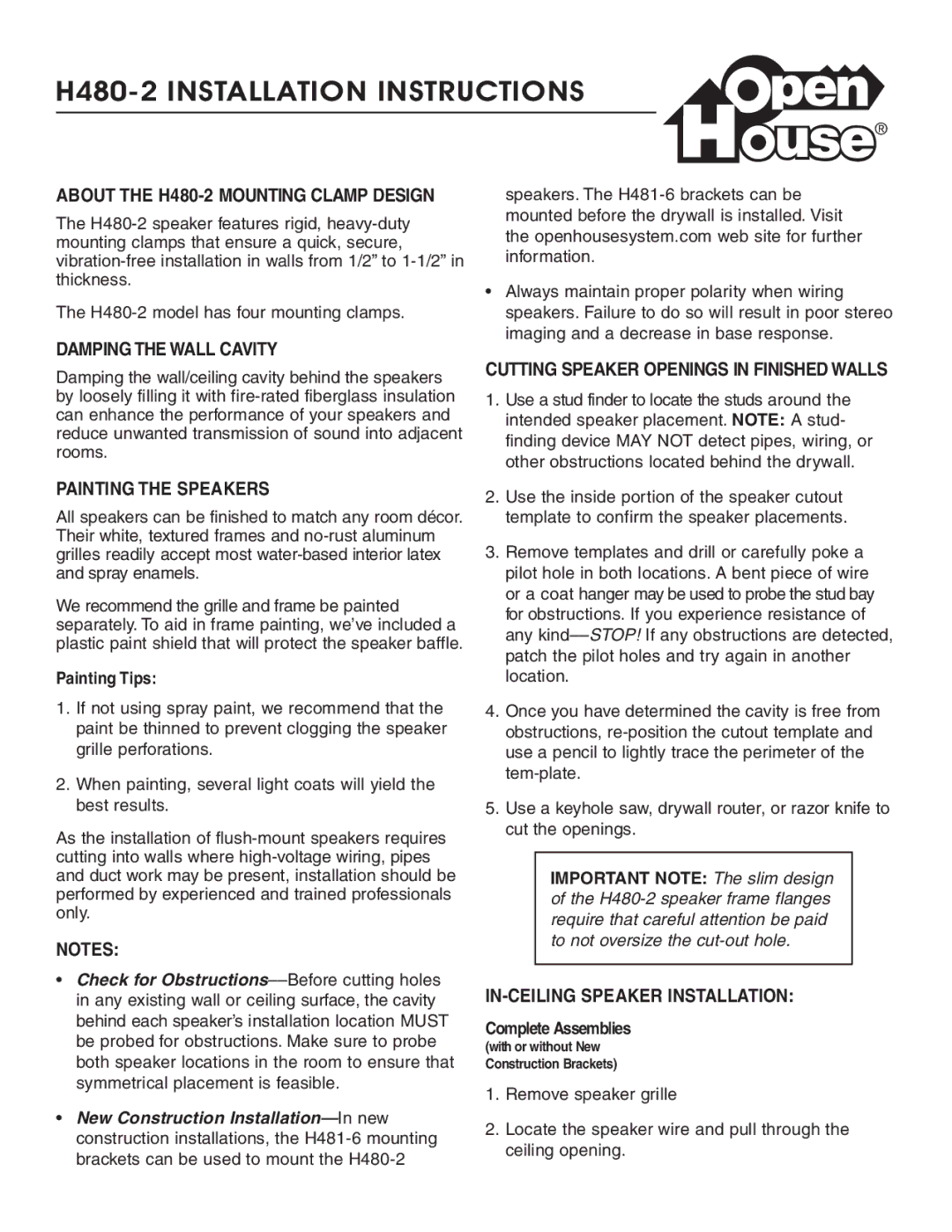
H480-2 INSTALLATION INSTRUCTIONS
ABOUT THE H480-2 MOUNTING CLAMP DESIGN
The
The
DAMPING THE WALL CAVITY
Damping the wall/ceiling cavity behind the speakers by loosely filling it with
PAINTING THE SPEAKERS
All speakers can be finished to match any room décor. Their white, textured frames and
We recommend the grille and frame be painted separately. To aid in frame painting, we’ve included a plastic paint shield that will protect the speaker baffle.
Painting Tips:
1.If not using spray paint, we recommend that the paint be thinned to prevent clogging the speaker grille perforations.
2.When painting, several light coats will yield the best results.
As the installation of
NOTES:
•Check for
•New Construction
![]() ®
®
speakers. The
•Always maintain proper polarity when wiring speakers. Failure to do so will result in poor stereo imaging and a decrease in base response.
CUTTING SPEAKER OPENINGS IN FINISHED WALLS
1.Use a stud finder to locate the studs around the intended speaker placement. NOTE: A stud- finding device MAY NOT detect pipes, wiring, or other obstructions located behind the drywall.
2.Use the inside portion of the speaker cutout template to confirm the speaker placements.
3.Remove templates and drill or carefully poke a pilot hole in both locations. A bent piece of wire or a coat hanger may be used to probe the stud bay for obstructions. If you experience resistance of any
4.Once you have determined the cavity is free from obstructions,
5.Use a keyhole saw, drywall router, or razor knife to cut the openings.
IMPORTANT NOTE: The slim design of the
IN-CEILING SPEAKER INSTALLATION:
Complete Assemblies
(with or without New Construction Brackets)
1.Remove speaker grille
2.Locate the speaker wire and pull through the ceiling opening.
